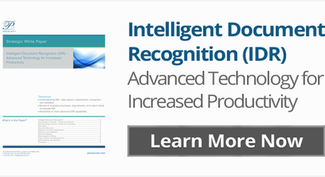There is a great article in Healthcare IT News titled “Meaningful use creates medical bridges to nowhere”. The article was the result of a discussion at the Clinton Foundation’s 2014 Health Matters Conference where Patrick Soon-Shiong, CEO of NantHealth, asserted that the incentives driving adoption of electronic medical records are causing severe problems with interoperability of systems required to actually deliver successful outcomes. He states that addressing meaningful use as a technology approach rather than a systems approach is causing adoption of disparate systems involved with knowledge management, delivery, and payment (interestingly enough, the 2014 HIMSS conference is titled “From Innovation to Interoperability” and it’s not by chance).
The same could be said of how document capture and data extraction is used to support meaningful use. There is a related problem with access to that document-based data that supports interoperability. While a lot of focus continues to be placed on systems associated with electronic patient data and then making that data interoperable with partner systems, there is still a large challenge with making enough of that patient data accessible to these systems inclusive of EMR, billing, and clinical systems in order to properly coordinate care.
For example, during a typical doctor’s appointment any number of documents can be created or updated including contact information updates, medical reports (physical, imaging, pathology, etc.) discharge summaries, and additional ad hoc notes. Some of these documents can be created in electronic systems, but many originate as paper.
HL7 created the Continuity of Care Document (CCD) reference for harmonizing competing standards and to supply the interoperability component required for meaningful use. CCD, along with the Continuity of Care Record (CCR) were both chosen as acceptable formats for meaningful use and the CCD is the standard for achieving Meaningful Use Stage 2 compliance. While these standards do a lot regarding describing documents which can significantly improve access to document-based information through standardization, this architecture requires that the information be encoded electronically which is not really applicable to physical documents. The only option is costly human intervention to review the document and add specific meta data tags so that it can be accessed.
Document capture solutions can overcome these costs by automatically locating and extracting key data off of these documents that can then be used as metadata to support interoperability initiatives such as CCD. For instance, medical forms and claim forms that are common within patient record collections can be scanned and processed to OCR and extract specific data required to comply with CCD standards, and then use this data to tag the document. These tags can be used for EMR systems to aid with locating, sharing, and transmitting documents to other care providers.
Going even further, document capture that includes the ability to locate and extract handwritten data can add significant value by automating tagging patient information that is often hand recorded by providers. A solution that can accommodate both is instrumental to not only supporting electronic medical record use but also can significantly aid the interoperability so necessary with achieving meaningful use.

